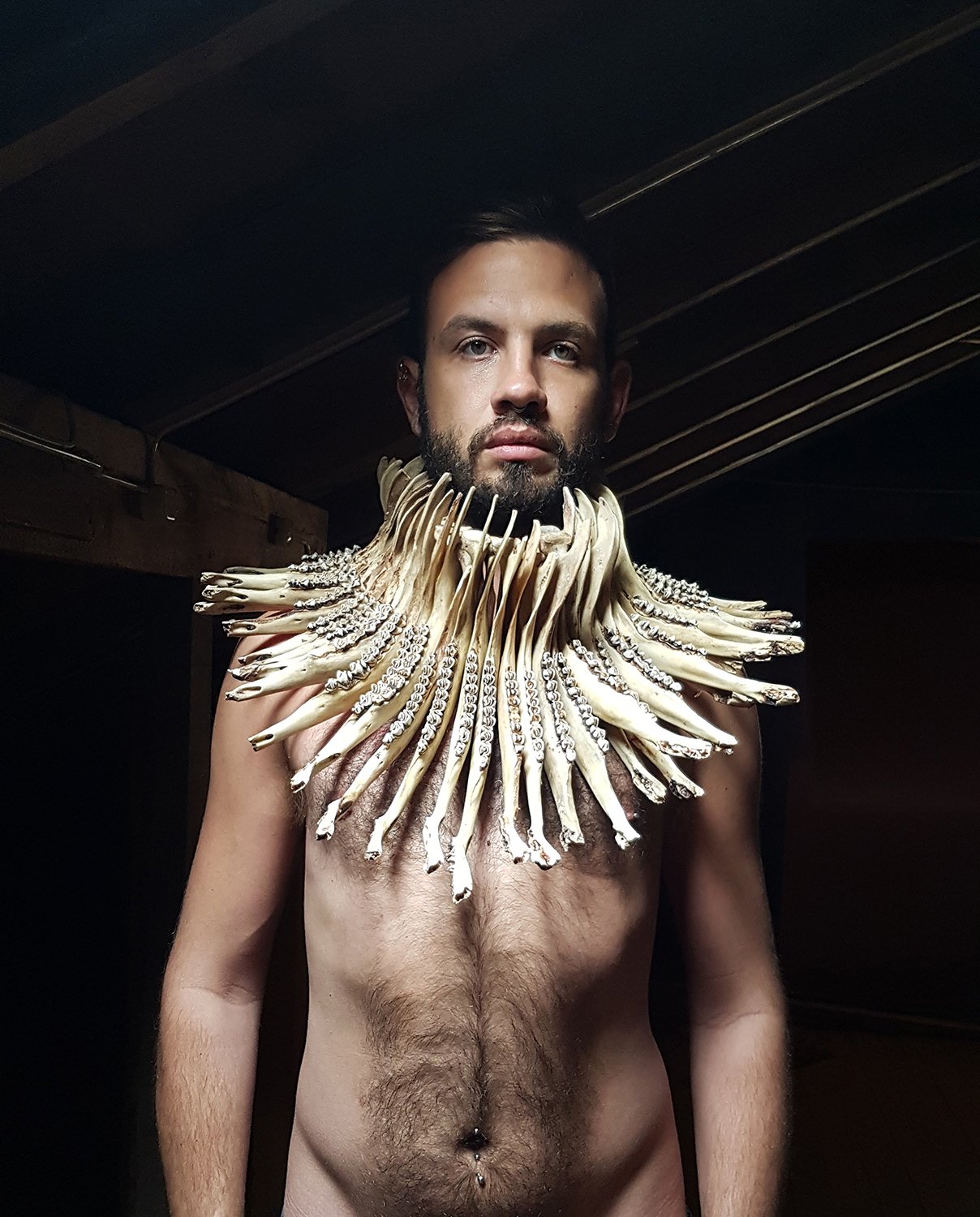
matt lambert is a non-binary, trans, multidisciplinary collaborator and co-conspirator working towards equity, inclusion, and reparation. Their practice is based in polydisciplinamory, entangling making, writing, curating, collaborating, and performing. lambert is currently a PhD candidate in craft at Konstfack in Stockholm Sweden and has published, curated, exhibited, and is collected internationally. Most recently they have been announced as a finalist for the Lois Moran Award for Craft Writing.
They have a MA in Critical Craft Studies from Warren Wilson College and an MFA in Metalsmithing from Cranbrook Academy of Art
matt lambert
they/them
"lambert is interested in the relationship of body, object and place and the movements or constellations that form between these points. It is in the inhabitation of these queer [and/or] liminal spaces that these interactions gain their strength as a force that is yet to be fully explored for its potential as a terroristic act to westernized and colonial institutions. lambert collaborates with multi-media artists of a vast array of disciplines to reconfigure the current cultural systems of queerness and body politics while challenging the boundaries of craft."
“Queerphoria in relation to my practice is about queer animations. To find the possible and the potential in histories, archives and pasts. It is the constant movement towards the horizon.”
What does [queerphoria] mean to you? This can be something felt, experienced, or made.
SPIT performance documentation inside Swedish Royal Armoury Museum,
collaboration with Carl Olof Berg, image by Jennifer Drotz Ruhn 2022
“These days there are attempts to drawing clear lines to queer aesthetics and queer identity as well as defining these things. I find this all a bit strange as to define queerness in a in and out, yes or no way is in a way not queer. Queer-normativity is possibly a word that will need to start being used if there is now an aesthetic of queerness. Queerness like craft in my world are companions, things to walk with, to wrap myself in and to find kinship in. Within my own practice I do not find myself confined by form, format or material. Material knowledge allows me to be conscious of fabrication and craft has provided me an approach but I am now interested in how this knowledge interacts with others in collaborative spaces. These collaborations can be through people, places, institutions or within myself. How queerness is expressed in my choices all depends on what frame, context or others you are putting the work in constellation with.”
What does being queer mean to you in relation to your material choices? Is it something you consider?
“I am hesitant to answer yes to either as queerness for me is relational to time and place. At the moment I am self-defining as a queer person who lives a queer life. As a lot of my work explores this way of being and thinking for the moment, I suppose you could also call my work queer.”
Is the work queer because the maker is queer, or is it queer because the subject matter is queer?
SPIT installation documentation inside Swedish Royal Armoury Museum,
collaboration with Carl Olof Berg, image by Jennifer Drotz Ruhn 2022
“Right now, my research is heavily invested in thinking about the work as the movements and gestures that happen around objects through different assemblages of viewer, place, time, and institutions. Being aware of the shifting of meanings and understandings that can arise from changing these different variables.
Work for me has the possibilities that theorist Irit Rogoff refers to as “queer animations”. Using historical archives and information to consider other histories and potentials. To create circumstances that activate what already exists in different ways to make new understandings and possibilities. I find myself less and less interested in making the object always be ‘the work’. Sometimes objects are just cartographic, things that represent or are pins on a map. Queerness in this way is opening more space for this map and wandering or cruising on that map sometimes in normative ways and at other times to get completely lost moving to undefined horizons. It is accepting that there is not a singular right way to make work but instead accepting that there is no such thing as a ‘right way’.”
“There are points in my studio practice that are deeply entwined or motivated by my identity and exploring it outside of a binary and with trans potentials and possibilities. I used to believe that I was my work and that we were inseparable. Through time and age I have been decoupling that idea and realizing how that mindset really had me stuck in a relationship to capitalism and constructed forms of approval that I actually do not need to find balance and systems of care that I really need in my life.”
What role does your studio practice play in your identity- if at all?
When creating your work, do you consider the relationship your object has with the viewer?
collaboration with Maret Anna Sara, title: Loaded
Keep Hitting Our Jaws, Digital Print, (collar made from reindeer jaws)2018




